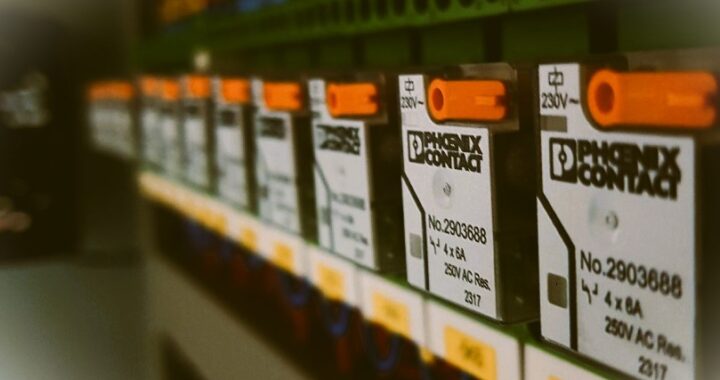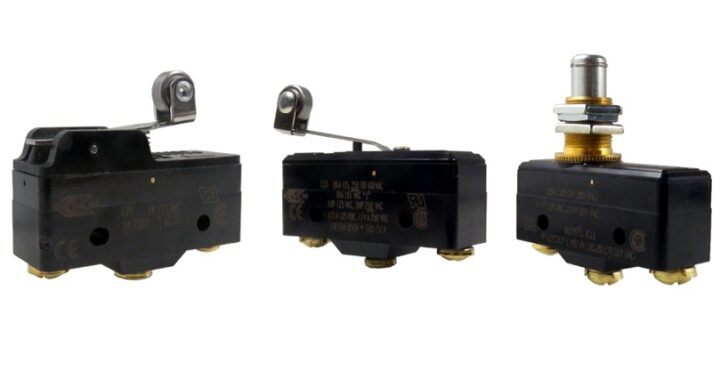Solid State Relay vs Mechanical Relay: A Comparison Guide

Everyone thinks that a solid-state relay is similar to a mechanical relay. Because both of them use a control circuit and a separate circuit for switching the load. But there are lots of differences between these two devices. I compared these two devices for you. Here we go! Solid state relay vs. mechanical relay!
Differences Between Solid State and Mechanical Relay
The differences between the solid-state relay and mechanical relay are:
1. Definition
The solid-state relay is a kind of special switching device that does not have any movable contact. It is not very different in operation from a mechanical relay but it employs semiconductor switching elements, such as thyristors, diodes, and transistors. The mechanical relay is a special device used in switching low currents with its moving contacts. The contacts of the mechanical relay change position with the coil energization and de-energization.
2. Moving part
The major difference between a solid-state relay and a mechanical relay is the contact moving.
A solid-state relay does not have any moving parts that a mechanical relay has. It consists of semiconductors and electronic parts. Solid-state relay switches signals, currents, or voltages electronically by the operation of these electronic circuits.
A mechanical relay has contacts and uses electromagnetic force to mechanically switch the contacts.

3. Dimension
In today’s design environment, size matters more than ever. Using compact products is important to reduce the general size of the equipment. A solid-state relay is more compact than a mechanical relay when the same load capacity is controlled.
4. Lifetime
A solid-state relay has a longer electrical and mechanical lifetime compared to a mechanical relay. The reliability of an SSR is determined by time-in operation, not the number of switching cycles. When an SSR is used within the published specifications, its life can exceed 19 million hours. The electrical life of a mechanical relay is generally rated at 100,000 to 500,000 operations.
5. Speed and frequency
A solid-state relay enables high-speed and high-frequency switching. It has a fast response time and an almost unlimited number of switching operations. Instantaneous turn-on solid state relay responds to a control signal in less than 100 µs.
6. Electrical noise
Mechanical relay generates electrical and audible noise that can be disturbing in automation applications. On the other hand, a solid-state relay makes no acoustical noise when the output contacts change state. This is highly desirable in many commercial and medical applications.
7. Shock and vibration
Compared to a solid-state relay, the mechanical relay is more susceptible to physical shock and vibration. Further, the orientation of the mechanical relay relative to the shock or vibration must be considered in designs where physical movement is expected.

8. Power consumption
Mechanical relay consumes more power than solid state relay. The mechanical relay must energize a coil before switching can take place. Coil energy must be maintained in order to hold the contact in the desired position. Typically, the mechanical relay consumes 80 mW of power to energize the coil. Solid state relay requires very little input power (in the range of 3mW) to switch large loads.
9. Heat dissipation
Solid-state relays can be packed far more densely than mechanical relays while producing less heat. Lower power consumption means less heat to handle, an additional, often hidden, savings to designers.
10. Contact wear
Solid state relay does not use switching contacts that will physically wear out. That’s why any contact wear does not occur in a solid-state relay. But the contacts of a mechanical relay can easily be worn due to high currents, temperature, or environmental conditions.
11. Isolation
Have high I/O isolation that is crucial for isolating sensitive equipment from the load. For applications that require high input-to-output isolation, solid state relay offers a better solution. With mechanical relays, the input-to-output isolation is most often referred to as insulation resistance. The term defines the resistance value between all isolated conducting sections of the relay. This value would include the isolation between the coil and the contacts, across the open contacts, and from contact to any core or frame at ground potential. Due to the physical construction constraints (e.g. contact gap) and the material used, the mechanical relay is generally rated at only 1000 Vrms.
12. Cost and market size
The average cost of a solid-state relay is much more expensive than a mechanical relay. Besides the market size of the mechanical relay is much bigger than the solid state relay.
13. Multiple contacts
Mechanical relays can have multiple contacts but the solid state provides only limited outputs.
14. History and Inventors
Mechanical relay has a long history. Joseph Henry invented the first mechanical relay in 1835 to improve his version of the electrical telegraph. Solid state relay was invented by Crydom engineers in 1972.
15. Electro-magnetic interference
Generate very little electromagnetic interference, providing clean switching for virtually any load. Magnetic fields have little effect on solid state relay since, unlike mechanical relay, it doesn’t use a magnetic coil to switch the load.
16. Applications
The solid-state relay is suitable for the control of heaters, lighting, and slightly inductive loads such as small fans. It can also be used for soft turn-on of high-power incandescent lamps. Mechanical relay has wider user areas. It can be used in any automation and controlling application.

17. Failure modes
All electronic components have failure modes. Mechanical relays, with their moving parts, contact surfaces, and wound coils, has generally higher failures in time relative to solid-state relays.
18. Contact bounce and arcing
Solid state relay does not generate sparks or electric arcs and does not bounce either electrically or mechanically. It is also immune to contact bouncing. The maximum bounce time of a mechanical relay is the period from the first to the last closing or opening of a relay contact during the changeover to the other switching position. Bouncing causes short-term contact interruptions. Bounces are detrimental to contact life and are particularly bothersome in applications where relays are used for pulse counting. In such cases, a bounce can easily lead to false pulse counting as contacts continue to make and break the circuit during the bounce. Contact bounce does not occur in a semiconductor-based solid-state relay. There are no contacts to bounce. Typical applications where bouncing and arcing will give problems are data acquisition applications. With mechanical relays, some wait time must be built into the application to avoid measuring during contact bounce. Contact bounce is also a problem in applications where voltage rises need to be counted, such as meters and counters. Contact bounces make false peaks, decreasing the reliability of the counter.
19. Voltage requirements
Since a solid state relay does not have to either energize a coil or open contacts, less voltage is required to turn a solid state relay on or off. Mechanical relay is controlled from power supplies ranging from 5 to 48 Vdc. Solid state relay, by contrast, can operate with supplies as low as 1.5 Vdc.
20. Direct logic operation
Solid state relays can be driven directly from logic circuits. The mechanical relay requires coil drive voltages that far exceed the output drive of logic circuits. As a result, additional components are required (like a PLC or slim relay) to allow a mechanical relay to interface with logic circuits.
21. Weight
Solid state relay is much lighter than equivalent mechanical versions; depending on the power can be up to 70%.
In conclusion, solid-state relays and mechanical relays may appear similar at first glance, but there are many key differences between these two switching devices. The main differences are that solid-state relays are more compact, have longer lifetimes, consume less power, generate less noise and electromagnetic interference, and are immune to contact bounce and arcing. On the other hand, mechanical relays have a wider range of applications, are less expensive, and have a long history. While both have failure modes, the mechanical relay is more prone to failure over time due to its moving parts and contact surfaces. In summary, the choice between the two types of relays will depend on the specific requirements of the application.

 Types of Timer Relays and Their Applications
Types of Timer Relays and Their Applications  Relay Applications: Real-Life And Industrial Examples
Relay Applications: Real-Life And Industrial Examples  Types of Micro Switches and Their Applications
Types of Micro Switches and Their Applications  Best Voltage Testers for Home Use: 2023 Edition
Best Voltage Testers for Home Use: 2023 Edition  Advantages of Transducers for Optimal Measurement
Advantages of Transducers for Optimal Measurement  Advantages of Infrared Sensors: Improved Accuracy and More
Advantages of Infrared Sensors: Improved Accuracy and More